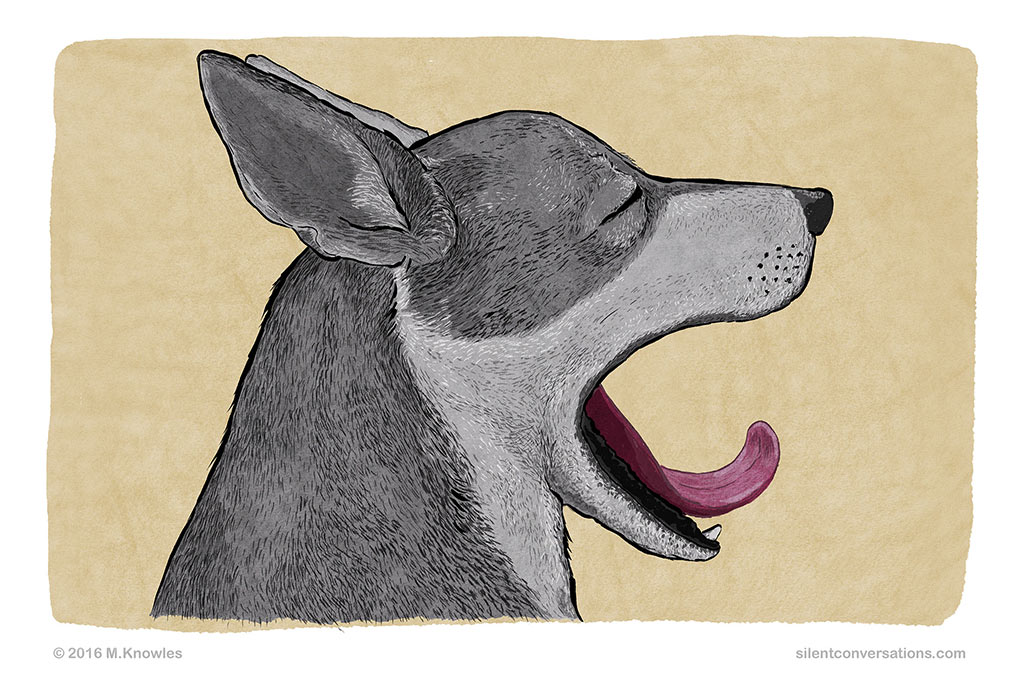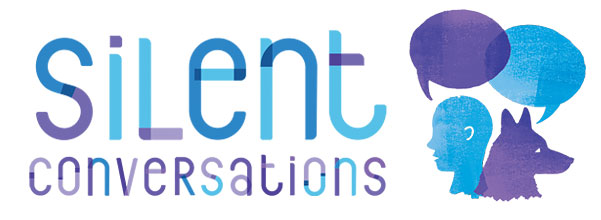
Yawn – Dog Body Language
There are times where a yawn is just a yawn, for instance at times when a dog may be tired or just waking up, but there are also occasions where yawns are offered outside such situations and are actually part of dog communication. The yawn can be a calming signal used as negotiation, showing that the dog is feeling uncomfortable with a situation. In other situations it may be a sign of stress.*
Here are a couple of examples of situations where a dog may offer a yawn:
-
A dog sitting on the ground is approached by a person front-on; the person leans over and starts scratching the dog with both hands quite roughly. The dog offers a few lip licks whilst doing a slight head turn. As those body language signals were ignored by the human, the dog may offer a yawn as well. She is deliberately offering calming signals with the hopes of defusing the situation, trying to communicate that she is not comfortable with being touched and having her space invaded.
-
It is a busy noisy dog class. The dog that you are working with in the dog class is panting, his movements seem faster and he seems restless. There are moments when other dogs in the class may start barking, and his ears go back while he scans the environment with eyes looking slightly enlarged and wide. You start noticing that he seems to be yawning a lot; the yawns seem short and exaggerated as if he is just stretching the jaw. In this instance the dog may be finding the whole atmosphere in class a bit overwhelming and stressful. This is shown with the combination of multiple yawns and other body language that is exhibited.
These are just a few examples; there may be many more. Start observing to see if you can notice any yawns in different contexts. As discussed below, interpretations such as the above examples should not be attempted without careful observation and consideration of all aspects of the situation.
*What is meant by stress?
When I mention stress, this does not necessarily imply negative emotion. I mean stress in the physiological sense. So certain body language signals can mean the dog is feeling some sort of emotional discourse. This discourse could range from positive to negative emotion. Both excitement and fear could have similar effects on the body, with various hormones being released and activating the sympathetic nervous system. The dog may be feeling uncomfortable/fearful or it could also be excited about something. When analyzing stress in body language, it is worth noting the frequency and intensity of the various body language signals.
A few notes to consider when observing dog body language
Observation before interpretation
Interpretations should be offered only once you have observed the complete interaction and taken note of the wider picture. To offer an unbiased interpretation of the body language, observe and take note of the situation, taking into account the dog’s whole body, the body language signals, and environment first before offering an interpretation. List all the body language you see in the order that it occurs; try to be as descriptive as possible without adding any emotional language. For instance, saying a dog looks happy is not descriptive and would be seen as an interpretation rather than an observation.
You could, however, list what you observe: ears to the side, eyes almond shaped, slight shortening of the eye, mouth open, long lips, tongue out, body moving loosely, body facing side-on, tail wagging at a slow even pace at body level.
From the observation, I could interpret that the dog seems relaxed or comfortable. I still prefer to say relaxed rather than happy, as I feel you will truly never know exactly what the dog may be feeling on the inside emotionally. It is quite likely the dog may be feeling happy, but I prefer to comment on how the dog is behaving in response to the situation rather than presuming internal emotional states.
The importance of viewing body language within context
Interpretations can vary depending on the context. It is possible for certain body language to be used in different contexts and have subtle differences in meaning within those contexts. Individual body language signals should not be observed in isolation; the wider picture should be considered. Take note of what the dog’s body as a whole is saying. Keep in mind each dog is an individual with varying skills and experiences. What may be typical for one individual may not be for another. In order to observe body language in context, consider the following: the situation, body language signals, the body language expressed by all parts of the dog’s body, environment, and individuals involved. It is worth noting how the body language changes with feedback from the environment or the other individuals interacting.

Martha Knowles
Author
My vision is to create a community of dog guardians who share their observations and interpretations of their dogs’ silent conversations. Hopefully, these experiences and stories will provide some insight into dog communication, which is often overlooked by the untrained eye because it is unfamiliar to humans. We are accustomed to communicating mainly with sound, so we are not attuned to the silent subtle gestures and body language used by dogs to communicate. If you take the time to observe, you will start to see these 'silent conversations' going on around you. My dream is for dog communication to become common knowledge with all dog guardians and as many people as possible. Surprisingly, there are still some professionals working in various dog-related careers who are uneducated about dog body language. Greater awareness of how dogs communicate will help to provide better understanding and improve the mutual relationship between dogs and humans. This will promote safer interactions between our two species and hopefully remove some of the expectations placed on dogs within human society. I would like dog guardians to feel empowered with their knowledge of dog communication so that they can be their dogs’ advocates and stand up for themselves and their dogs when it really matters.
